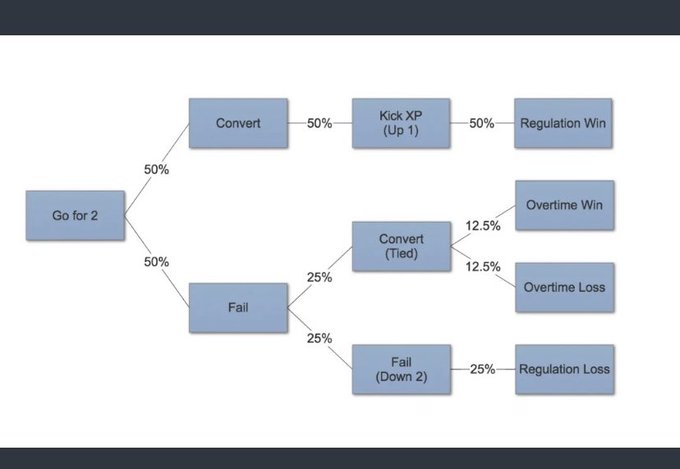ColoradoHusk
Donor
Tom Osborne going for 2 against Miami has always been lauded as our great coach going for the win. I always agreed with that decision, but it's easier to say that after NU won 3 National Championships in the 90's. However, Dr. Tom was wrong in the order in which he went for 2. If Tom knew he was going to try for 2 at the end of the game, he should have gone for 2 after NU scored a TD in the 4th quarter to make the score 31-23. If Osborne went for 2 after the first TD, he would have given NU a 50% chance to win, 25% chance to tie, and 25% chance to lose. Below is a chart, which shows the math behind the decision. If you ignore the final column, it applies to Osborne's decision in the 1984 Orange Bowl. This topic came up during the Indy - Buffalo playoff game this past weekend, when Frank Reich went for 2 after a score in the 4th quarter.



:no_upscale()/cdn.vox-cdn.com/uploads/chorus_asset/file/19244759/NCAA_2_point_conversion_graph.jpg)